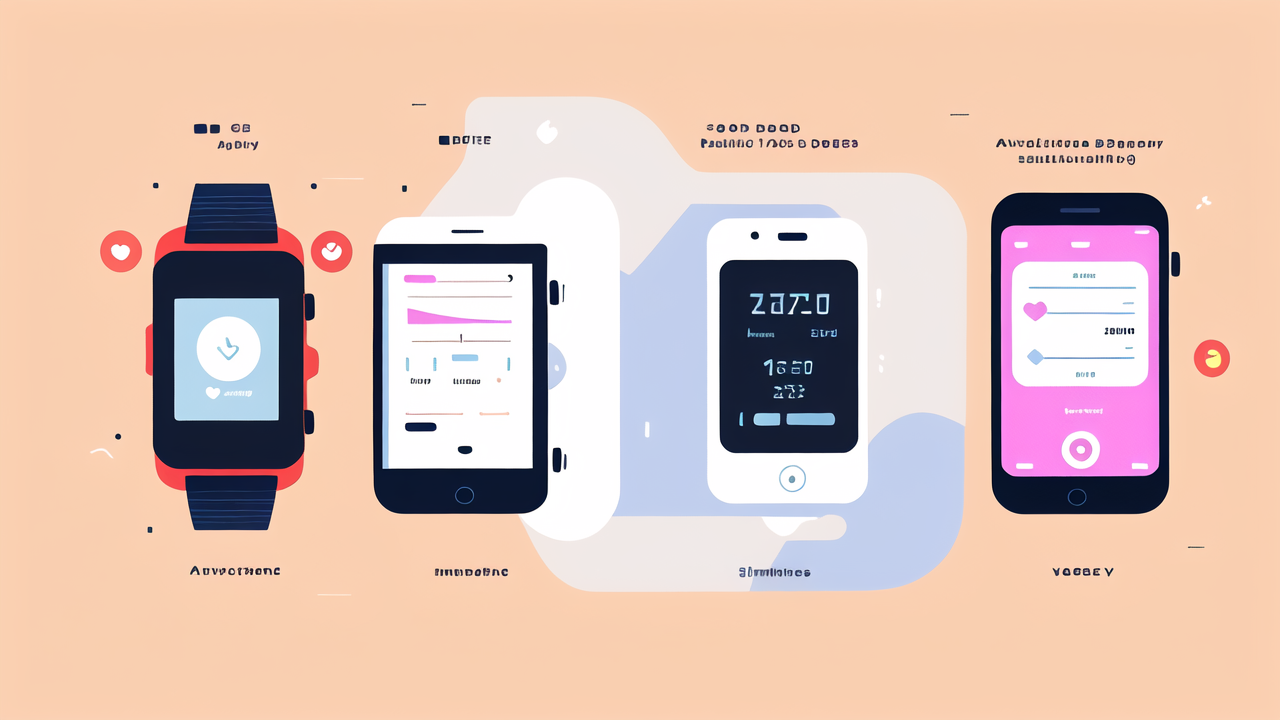The Rise of Digital Watches in the Fitness Industry
Understanding the Evolution of Wearable Technology
Wearable tech has come a long way since its early days. Digital watches have evolved from simple timekeepers to powerful fitness tools. In the past, watches only told time. Now, they track our steps, heart rate, and more.

The journey started with basic pedometers. These devices counted steps and not much else. Then came fitness bands. They added features like calorie tracking and sleep monitoring. Today's digital watches are mini-computers on our wrists.
They combine the best of smartwatches and fitness trackers. These devices can now measure blood oxygen levels and even detect falls. Some can even take ECG readings. The technology keeps improving, making digital watches more useful for fitness enthusiasts.
The Shift From Traditional Clocks to Smart Devices
The move from traditional watches to smart devices has been swift. People now want more than just time from their wrist wear. They seek devices that can enhance their fitness journey. Digital watches fill this need perfectly.
These smart devices offer features that traditional watches can't match. They provide real-time data on workouts and health metrics. Users can track their progress and set goals easily. The convenience of having all this info on your wrist is unmatched.
Moreover, digital watches seamlessly integrate with smartphones. This allows for easy data syncing and analysis. The shift has made fitness tracking more accessible and user-friendly. It's no wonder that more people are choosing digital watches over traditional timepieces.
Maximizing Health and Efficiency with Digital Watches
Analyzing Features That Enhance Fitness Regimens
Digital watches come packed with features that boost fitness routines. Here are some key features:

- Heart Rate Monitoring: Tracks your pulse during workouts and rest.
- GPS Tracking: Maps your runs and bike rides accurately.
- Step Counting: Keeps track of your daily movement.
- Sleep Tracking: Analyzes your sleep patterns for better rest.
- Workout Modes: Offers specific tracking for various exercises.
- Water Resistance: Allows for swimming and water sports tracking.
These features provide valuable data for fitness enthusiasts. They help users understand their body's response to exercise. This information can be used to optimize workouts and recovery times.
Many digital watches also offer guided workouts. These can be especially helpful for beginners. They provide instructions and track your form. Some even offer real-time coaching based on your performance.
The Impact of Wearables on Daily Routines and Exercise Programs
Digital watches have changed how we approach fitness and daily activities. They've made it easier to stay active throughout the day. Many people now aim for step goals or stand hours. These small changes can lead to big improvements in overall health.
For exercise programs, digital watches offer structure and motivation. They can remind you when it's time to work out. They also provide instant feedback on your performance. This immediate data can help you adjust your efforts in real-time.
Many watches now offer social features too. You can share your achievements or compete with friends. This adds a fun, social aspect to fitness. It can be a great motivator for those who need an extra push.
Digital watches have also made it easier to track long-term progress. You can see how your fitness improves over weeks or months. This can be very rewarding and encourage you to stick to your goals.
The Role of Digital Watches in Fitness Communities
Building a Community Around Fitness and Tech
Digital watches have sparked a new kind of fitness community. Users can connect with others who have similar goals. Many watch brands have their own fitness apps and social platforms. These spaces allow users to share tips, challenges, and successes.

Online forums and groups dedicated to specific watch models are common. Here, users discuss features, troubleshoot issues, and share experiences. This creates a sense of belonging among users of the same device.
Some watches allow users to participate in virtual races or challenges. These events bring people together from all over the world. It's a unique way to feel connected while working towards personal fitness goals.
The tech aspect of these communities is also significant. Users often discuss the latest updates and features. They share how they use their watches to improve their fitness routines. This blend of fitness and tech creates a dynamic, engaging community.
How Digital Watches Are Empowering Users to Achieve Fitness Goals
Digital watches are powerful tools for personal empowerment in fitness. They provide users with data-driven insights about their health. This knowledge allows people to make informed decisions about their fitness journey.
The ability to set and track goals is a key feature of digital watches. Users can see their progress in real-time. This immediate feedback can be highly motivating. It helps people stay committed to their fitness plans.
Many watches offer personalized coaching based on your data. This can help users improve their form and avoid injuries. It's like having a personal trainer on your wrist. This guidance can be especially helpful for those new to fitness.
Digital watches also make it easier to maintain consistency. They can send reminders to move or exercise. This gentle nudging can help build healthy habits over time. The long-term tracking also shows how small efforts add up to big changes.
In conclusion, digital watches have revolutionized the fitness industry. They've made health tracking accessible and engaging. As technology continues to advance, these devices will play an even bigger role in our fitness journeys.




Leave a comment
This site is protected by hCaptcha and the hCaptcha Privacy Policy and Terms of Service apply.